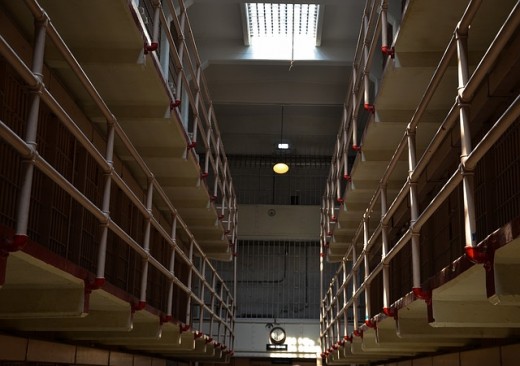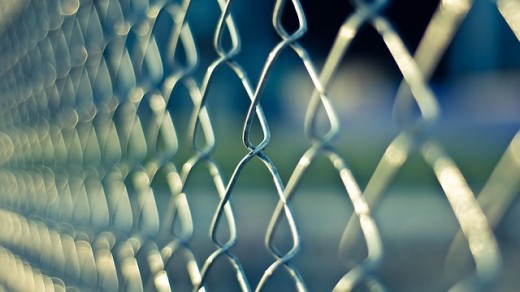Rehabilitation, not Punishment
In the United States, more people are in prisons per capita than in any other country in the world (Prison Brief). According to the New York Times, “1 in every 31 adults are in prison or on parole” (Moore). Crimes that can result in prison time include illegal possession of a weapon, driving under the influence, burglary, auto theft, and escalate to violent crimes such as armed robbery, assault, and murder. When considering those who are in the prison system, it can be easy to focus on the most violent cases of first degree murder and take the opinion that they are beyond redemption. Many Americans hold the opinion that prison should be a high security lockup, with little or zero freedoms, maintaining that prison life in and of itself should be the deterrent for people to not commit crimes. But that would neglect the hundreds of thousands of other offenders who are leaving prisons every year. In 2011 over 680,000 people were released from U.S. correctional facilities (Carson). Who will these people be when they leave prison after a two, five, or even twenty year sentence? Knowing that over half a million people who were once criminals are entering our society every year, we need to focus not just on punishing them for their crimes or containing their behavior for the duration of their prison life, but on changing their capabilities and views about the society in which they will be living.

The arguments for minimal freedom in prisons are rooted in the deeply felt pain of the victims of crimes. In the case of murder, their families carry the grief and anger of losing a loved one. An eye for an eye is often cited for fair retribution against these perpetrators. Others stress the economic cost for law abiding taxpayers to subsidize medical insurance and work education. These are things that all regular citizens must pay for themselves, and it seems unfair that prisoners can obtain them for free or reduced cost. Combine these two arguments and ask the surviving family of a hit and run victim to pay taxes for the education and release of the person who caused so much pain in their lives. It can be hard to see the logic or justice.
Let your vote count!
Should prison be about rehabilitation, or punishment?
Proponents of eye for an eye argue that if a crime is committed, the guilty party should be equally punished for what they have inflicted on another. While this concept seems to have an obvious fairness, it falls short in practical application. If a criminal steals 20 dollars from someone, and we make the criminal pay back the twenty dollars, all he/she has learned is to not get caught. If the thief was ordered to pay an additional 20 dollars so that he/she may learn their lesson, you may put them in a more destitute position where stealing is still the only option in the future. Paying back what was stolen is needed but is not enough, so the thief is sent to prison. In another scenario, imagine if a man assaulted another man breaking his arm, thus preventing him from working. The attacker should be ordered to pay medical bills and lost wages for the victim. But should the attacker have his arm broken as well? This would certainly prevent the attacker from being able to pay the victim's damages, and possibly drive him to steal as a means of surviving. In this scenario our justice system would rule the attacker pay for damages, and be sent to prison. Mahatma Gandhi said, “An eye for an eye makes the whole world blind.” And from these examples we can see that the principle of eye for an eye is not practiced for good reason, it leads to more societal problems than there were initially. So the very existence of our prison system indicates a desire to not rule by eye for an eye, but to create an environment where the law breakers of our society go to learn their lesson.

So how does a prisoner learn their lesson? Can we just lock them up behind bars for ten years and trust that their conscience will be their guide? Will lack of freedom lead to reformation? Research done in prisons around the country, and the world, show the exact opposite to be true. A study by the British Medical Journal found that isolation and lack of stimulation in prisoners leads to greater occurrence of drug use and violence within the prison (Nurse). Often forming addiction that follows them upon release. This only trains them to turn to the easiest escape when outside the prison, once again drugs, which goes hand in hand with crime. In fact, sixty-seven percent of inmates released from prison return within three years. And the majority of them indicate drug use, and drug culture as a main contributor to their return (Phillips). So we must ask ourselves, when those 680,000 prisoners return to society every year, do we want them to have spent their time becoming educated and involved in therapy and rehabilitation? Or in a stressful environment where the easy choice was drugs and violence? Prisons must not only tighten security to prevent contraband from entering prison walls, but they must also stimulate the minds of the prisoners in a positive way.

The expense of incarceration for the taxpayers is another concern. In the state of California it costs over 47,000 dollars per inmate per year to maintain the prison system. This includes what may be considered luxuries like healthcare, drug rehab programs, and educational services. But the majority of this money is spent on security, administration, and healthcare. And in 2009, only 1,612 dollars were spent on rehabilitation per inmate (California Criminal Justice FAQ). Opponents of spending more on rehabilitation services claim the expense is already too high. But as stated earlier, sixty-seven percent of released inmates are returning to prison, costing California an additional 47,000 dollars per year. So investing even 2,000 more dollars on rehabilitation per inmate per year, could save 47,000 dollars in the future.
Addressing the families of victims is one of the more divisive aspects of the prison rehabilitation system. To ask a family to pay into a system that actively tries to make a better life for the very person who wronged them seems not only unjust, but like pouring salt on an open wound. But realistically only a small fraction of one's taxes goes to the prison system. And an even more minuscule portion of that would benefit the perpetrator in question. But the act of developing change within these criminals benefits our society at large. Change which the inmates would not pursue themselves. Leah Cowdry gave a keynote address on the state of our correctional facilities in America, and informs us that when services are provided at a cost to the prisoner, they are much less likely to take advantage of them, thus defeating the rehabilitation process. While it is painful and even unjust that a victim can end up supporting someone that they despise, the greater good to our society that comes from all reformed criminals outweighs the option of not paying for their reformation.
As a society we may have progressed passed the days of cutting off the hands of thieves to deter stealing, but within many of us is the desire to punish and seek some kind of revenge upon the criminals of the world. While we do have systems of rehabilitation in this country that include medical care, drug therapy, and educational systems, we cannot claim that our tax dollars are managed efficiently, due to the high rates of recidivism. Correctional programs across America face many challenges. The prisons are often overcrowded, drug use is prevalent, and the cost to prisoners for medical and rehabilitation services often prevents them from taking full advantage to change their lives. In addition to these problems, many people in the country refuse to see criminals as people deserving of a second chance. But as it is our society that has deemed these people unworthy to live among us, it is our duty as members of this society to pay for proper rehabilitation so that they may one day live among us again. And an exercise in our humanity to give them the chance to change.
Works Cited
“California Criminal Justice FAQ: How Much Does It Cost to Incarcerate an Inmate?" California Legislative Analyst Office 2009. Web. 10 Mar. 2013.
Carson, E. Ann. "Bureau of Justice Statistics (BJS)." Bureau of Justice Statistics (BJS). BJS, 17 Dec. 2012. Web. 10 Mar. 2013.
Cowdrey, Leah. "Commission: U.S. prisons, jails in need of reform: problems include violence, safety, lack of mental health care." The Nation's Health 21 Aug. 2006. Web. 10 Mar. 2013.
Moore, Solomon. "Study Shows High Cost of Criminal Corrections." The New York Times. The New York Times, 03 Mar. 2009. Web. 10 Mar. 2013..
Nurse, Jo, Jim Ormsby, and Paul Woodcock. "Influence of environmental factors on mental health within prisons: focus group study." British Medical Journal 30 Aug. 2003. Web. 10 Mar. 2013.
Phillips, Lindsay A. "Substance abuse and prison recidivism: themes from qualitative interviews." Journal of Addictions & Offender Counseling 31.1 (2010) Web. 10 Mar. 2013.
“Prison Brief - Highest to Lowest Rates” International Centre for Prison Studies. ICPS, 18 Mar. 2010. Web 10 Mar. 2013.





